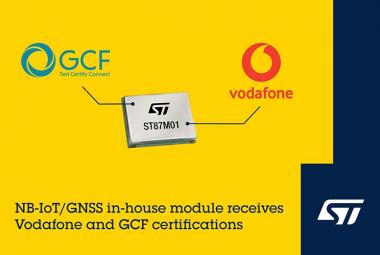The introduction of 5G RedCap and 5G eRedCap will play a crucial role in driving mass adoption of 5G, particularly in developing and underdeveloped countries.
Counterpoint’s new research report, dubbed 'Global Cellular IoT Connections Tracker' has now stated that in 2022 cellular IoT connections increased at a rapid pace around 29 percent YoY internationally. Towards the end of 2030, it is anticipated to grow at a CAGR of 10.8 percent to reach an installed base of over 6 billion. According to the survey report, China is now leading the spot with two-thirds of the total IoT connections in 2022 followed by Europe and North America.
The international cellular IoT market has gained a massive growth in spite of the impediments faced by the numerous industries such as supply chain imbalances, inflation, and macroeconomic constraints. The growth is mostly propelled by various digital transformation initiatives undertaken by numerous industry applications such as asset tracking, smart meters, and automobiles. The industries have been benefited a lot by the cellular IoT connectivity in terms of automating processes, generating cost savings, streamlining operations and boosting productivity. The IoT firms have been positively impacted by the coronavirus pandemic because it increased the momentum of digital transformation.
Senior Research Analyst Soumen Mandal opined, “At the end of 2022, 4G and NB-IoT together accounted for nearly 90% of the installed base of cellular IoT connections. 4G emerged as the most preferred technology for cellular IoT connections after surpassing 2G and 3G-based IoT connections in 2016. NB-IoT has gained significant popularity in China, while Japan, Australia and North America prefer LTE-M technology for lower-end applications. Europe has adopted a combination of NB-IoT and LTE-M, supported by roaming services offered by most operators.”
In recent times, 4G Cat 1 bis technology has gained significant popularity over NB-IoT due to its superior performance. Applications such as POS, telematics and smart meters are increasingly adopting this technology on a larger scale. The rising shipments of devices based on 4G Cat 1 and 4G Cat 1 bis technologies are contributing to the stagnant market growth of NB-IoT. 5G is still nascent but researchers expect 5G-based applications to pick up as the module ASP (average selling price) drops to sub-$100 and more 5G RedCap-based solutions become available in the market. The introduction of 5G RedCap and 5G eRedCap will play a crucial role in driving mass adoption of 5G, particularly in developing and underdeveloped countries.
Commenting on the market outlook, Research Vice President Neil Shah said, "Over the past year, the cellular IoT industry has witnessed many consolidations, including Telit’s acquisition of Thales’ cellular IoT business, Semtech’s acquisition of Sierra Wireless, and Aeris Communications’ acquisition of Ericsson’s IoT accelerator and connected vehicle cloud business. As the cellular IoT module market continues to mature, we can expect more consolidations aimed at providing improved solutions and maintaining competitiveness against other non-cellular connectivity technologies.”

















